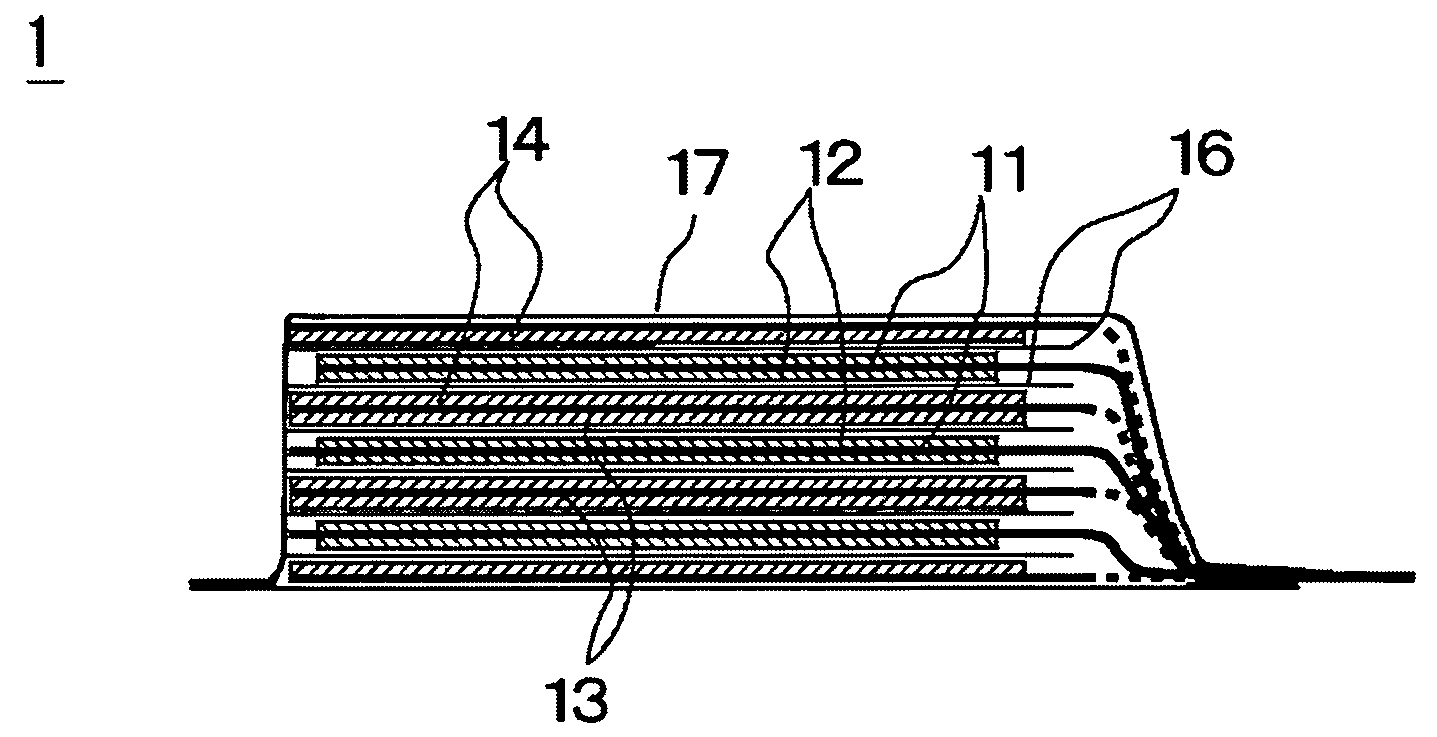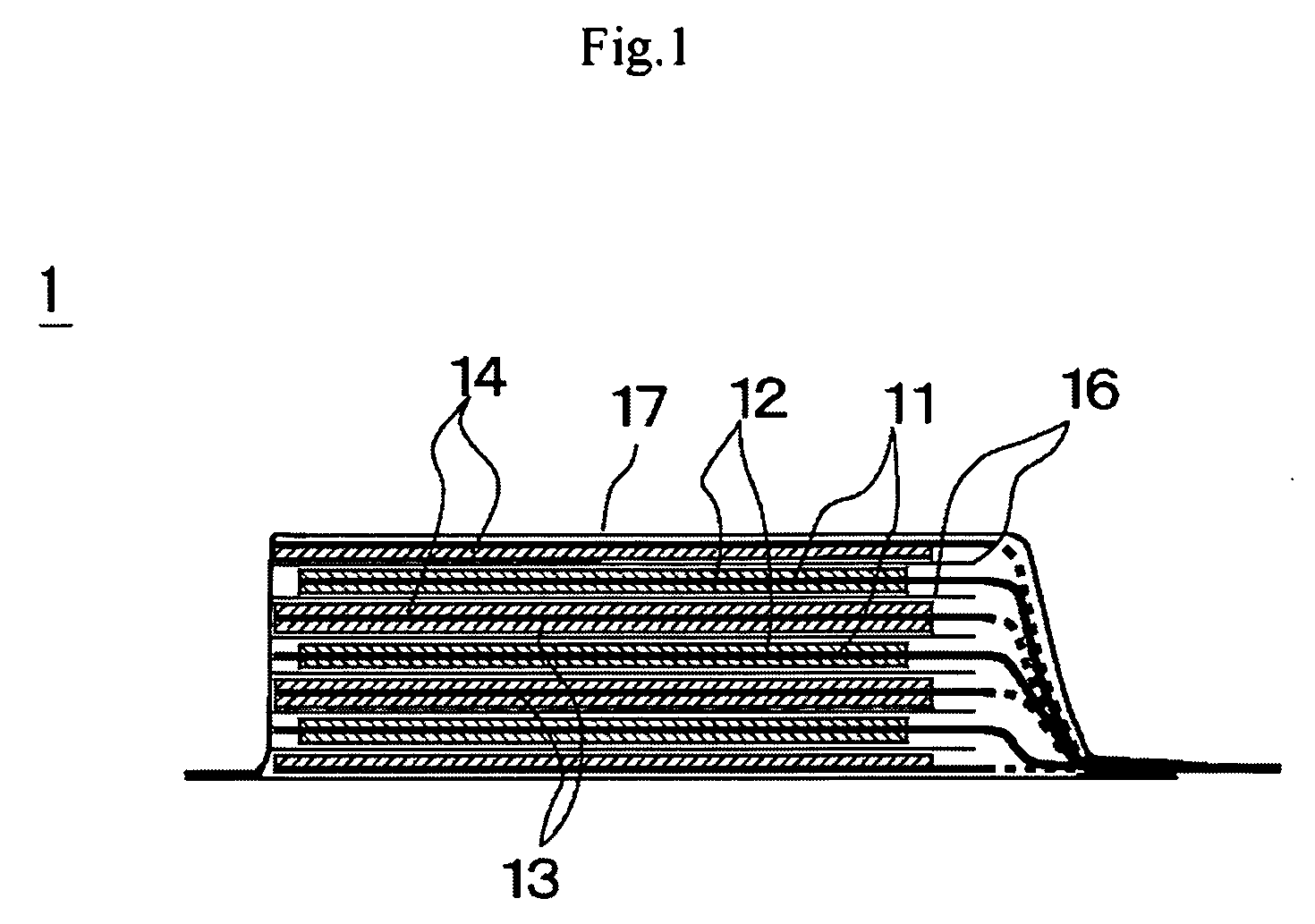Non-aqueous electrolyte and non-aqueous electrolyte secondary battery using the same
- Summary
- Abstract
- Description
- Claims
- Application Information
AI Technical Summary
Benefits of technology
Problems solved by technology
Method used
Image
Examples
example 1
Preparation of Battery
[0071]Now, the preparation of the battery of this example will be described below. A 20 micrometer-thick aluminum foil was used as positive electrode collector and LiMn2O4 was employed as positive electrode active substance. On the other hand, a 10 micrometer-thick copper foil was used as negative electrode collector and the negative electrode was prepared by depositing lithium metal as negative electrode active substance to a thickness of 20 micrometer on the copper foil by evaporation. A mixture solvent of EC and DEC (volume ratio: 30 / 70) was employed as solvent of electrolyte and LiN(C2F5SO2)2, which is a fluorine-containing organic lithium salt, was dissolved in the mixture solvent as supporting electrolyte by 1 mol / L. Additionally, compound 1 listed in Table 1 shown above was added to the electrolyte so as to be contained by 1 wt %. Then, the negative electrode and the positive electrode were laid one on the other with a polyethylene separator interposed b...
examples 2 , 3 and 4
EXAMPLES 2, 3 AND 4
[0073]Non-aqueous electrolyte secondary batteries were prepared in these examples as in Example 1 except that the compound number 1 was replaced by the respective compounds listed in Table 2 that is, by the compounds of the compound numbers 5, 7, 14 listed in Table 1 and the battery characteristics of these batteries were tested as in Example 1. Table 2 shows the results.
example 5
[0077]A secondary battery was prepared in this example as in Example 1 except that LiN(C2F5SO2)2 was replaced by LiPF6 as supporting electrolyte and the negative electrode was formed by mixing graphite powder, polyvinylidene fluoride dissolved in N-methyl-2-pyrolidone so as to operate as binder and a conductivity providing material into paste, applying the mixture paste to a copper foil and drying it.
[0078]The charge-discharge cycle test of this example was conducted at temperature of 20 degrees C. with a charge rate of 1 C, a discharge rate of 1 C, an end of charge voltage of 4.2V and an end of discharge voltage of 3.0V. The capacity maintenance ratio (%) is the value obtained by dividing the discharge capacity (mAh) after 400 cycles by the discharge capacity (mAh) at the 10th cycle. Table 3 below shows the results obtained from the cycle test.
PUM
 Login to View More
Login to View More Abstract
Description
Claims
Application Information
 Login to View More
Login to View More - R&D
- Intellectual Property
- Life Sciences
- Materials
- Tech Scout
- Unparalleled Data Quality
- Higher Quality Content
- 60% Fewer Hallucinations
Browse by: Latest US Patents, China's latest patents, Technical Efficacy Thesaurus, Application Domain, Technology Topic, Popular Technical Reports.
© 2025 PatSnap. All rights reserved.Legal|Privacy policy|Modern Slavery Act Transparency Statement|Sitemap|About US| Contact US: help@patsnap.com



